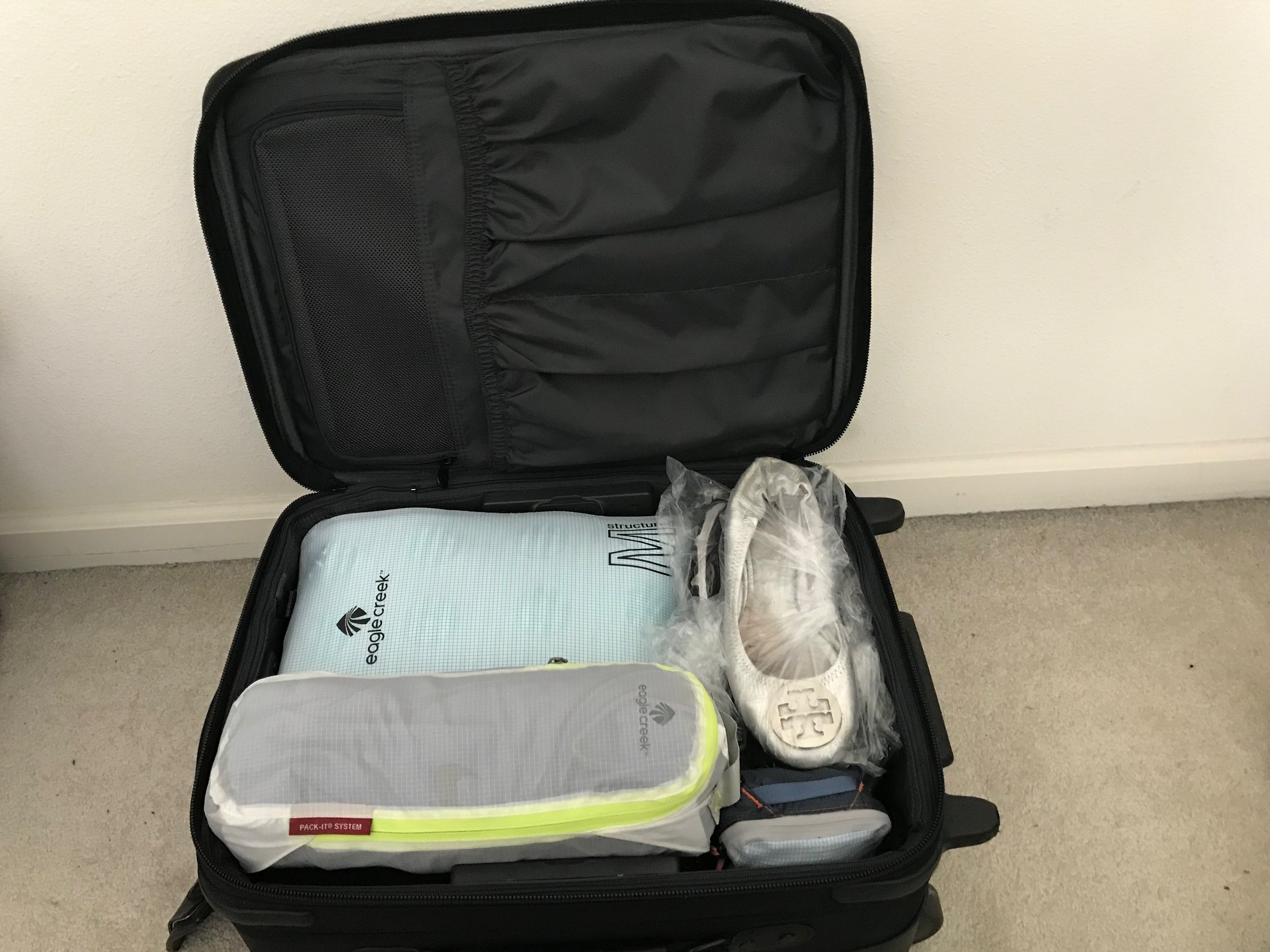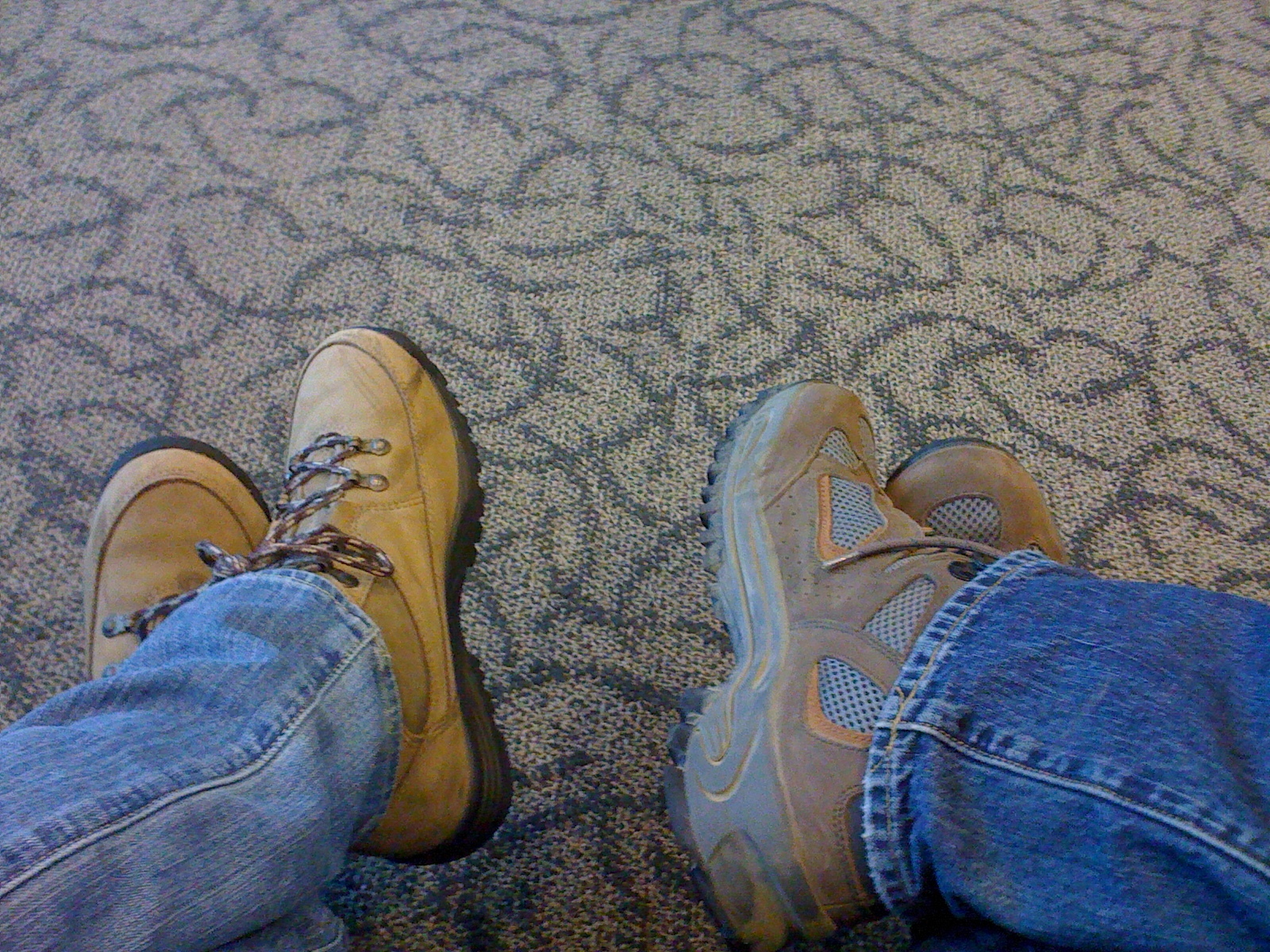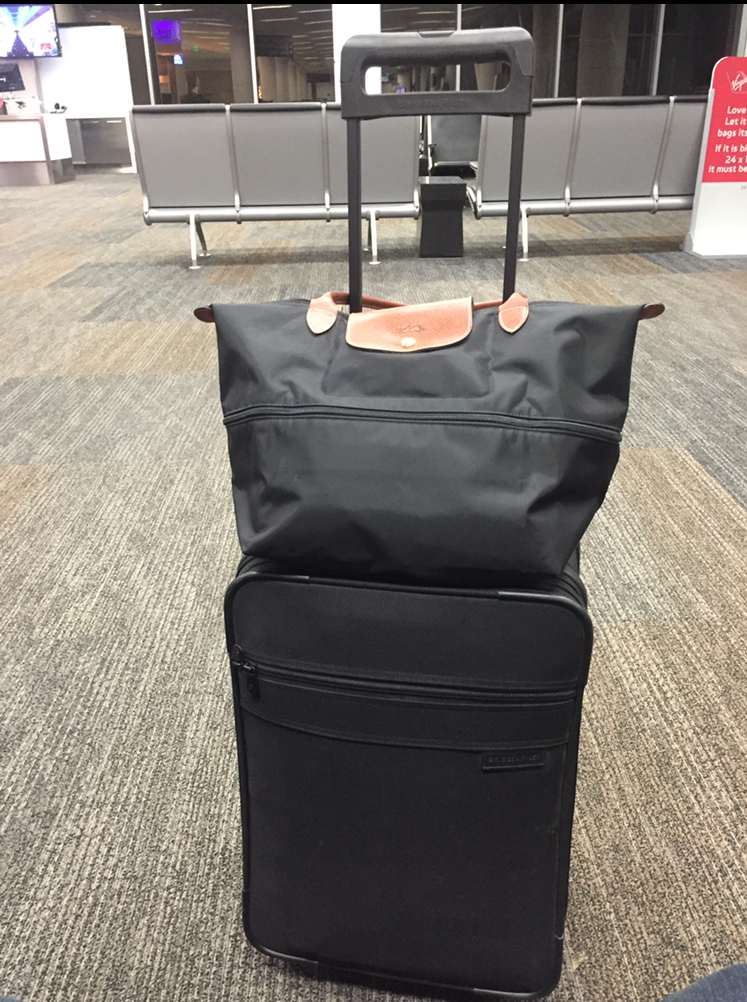Just a Carry-on
Is it actually possible to avoid checking luggage? Yes, it really is. My family and I choose to travel with carry-on suitcases only, as do several of our friends. I have been asked frequently about how and why we do this, so I thought I’d share my thoughts here.
We travel with carry-ons to save time when we reach our destination, to remove the hassle of dealing with lost or destroyed bags, and because it allows us to stay more mobile. It’s much easier to go from one destination to another when we don’t feel weighed down by all of our belongings. Saving the checked bag fee is also nice, of course. In addition, having only carry-ons means that we can take a taxi or an Uber at our destination without worrying if our luggage will fit.
Does the length of trip matter? Not really. Regardless of the trip’s duration, we pack for about a week, planning to do some washing on the longer trips. While it can sometimes be tough to wash clothes while on-the-go, we still prefer this strategy to lugging multiple suitcases wherever we travel.
Of course, packing lightly is key to traveling with less luggage!
Here are 6 Tips for Packing Lighter:
1 Luggage – Start with a good, solid, rolling carry-on (ours are sized for international flights, so they are slightly smaller than their domestic counterparts) that will fit in an overhead bin and pick a personal item that suits your needs. The carry-ons we use are from Briggs & Riley and have been traveling around the globe with us for almost 10 years, sustaining little to no damage in all that time. I love that these suitcases are expandable, allowing us to easily find more space when needed and to repack our belongings quickly when we have to move from place to place (but don’t need to fit an airline’s strict overhead measurements). My personal item is a large, also expandable, Longchamp bag, while my daughter prefers a backpack and my husband uses a larger bag that can safely hold items like his laptop and an iPad.
All packed up, minus one down puffer jacket I added on top for easy access.
2 Packing Cubes —We use a combination of packing envelopes and cubes to fill our suitcases. I prefer the ones from Eagle Creek and have a mix of both their regular and lightweight pieces, each one carefully chosen to fit into my suitcase like a three-dimensional game of Tetris. I put shirts with shirts, pants with pants, etc., which makes it easy for me to find things upon arrival without completely unpacking everything. I also have a compression cube which gives me just a little more space in my suitcase once I zip it tight. I have found these pieces to be thin, yet durable, and altogether tremendously helpful when packing and unpacking.
Empty suitcase with packing cubes & an envelope right before I started packing for my next adventure.
3 Clothes — First of all, scale down what you think you need. Have you ever returned home from a trip with several items unworn? Did you really need to bring that 5th pair of pants? How many shirts do you really need? Take some time to think about the weight and bulk of certain items. I choose to pack my thinner pants and shirts, knowing that I can add another layer if I’m cold. It’s amazing how much of a difference this choice can make. Next, select items that can be mixed and matched. I tend to choose a basic color scheme so that if I hand-wash one item I can wear it again with something else. In the bag above, I’ve packed for a trip to Norway and managed to fit in 4 pairs of pants, 8 shirts, 3 sweaters, one down jacket, sleepwear and personal items, plus 2 pairs of shoes.
Taken on an unusually hot April day in Paris.
4 Layers — Technically part of clothes, but I think this is important enough for a separate section. Instead of bringing clothes for hot and cold weather, try to bring basic clothing that would work in either setting and then add some warmer top layers that can be worn on the colder days. You’ll be ok in that thin T-shirt on a cold day if you top it with a fleece or a down puffer. And if it’s raining, you can add a rain shell on top of one or both of those layers. If you’re expecting extra cold weather, add a base layer, and if you think it’s going to be rainy, add a few quick-dry items into the mix. Not only can you dry off within minutes if you get wet, but quick-dry items also dry swiftly after you wash them. These strategies really worked well for us when traveling to places with uncertain and ever-changing weather, like Iceland, Scotland, Norway, and Alaska. Plus, layering makes things easy when you don’t get the weather you were expecting when packing, like when we took a trip in April and discovered a super chilly Israel and then found Paris and London to be very hot and sunny.
Unexpected cold snap in Jerusalem, but we were prepared.
At the airport - we really have traveled in hiking boots!
5 Shoes — Shoes make it really hard to fit everything into 2 small bags. My first tip is to wear the largest pair you are bringing (yes, even if it means you’re wearing hiking boots). Also, think about the color scheme of your wardrobe and choose just one pair of dress shoes to bring, one that hopefully will go with everything. If that one pair doesn’t fit with your favorite dress, either leave the dress behind or switch the shoes. Finally, I take a pair of walking shoes that are almost worn-out but still provide comfort and support. Then, when the trip is over, I leave them behind, freeing up some space in my luggage for souvenirs.
6 Toiletries – I pack tiny versions of what I really need, never the full-size products I use at home. And if I can’t find what I want in a travel size, I’ll just fill up a small reusable container with it. Liquids are the hardest part, since the limit is one quart per person, but we’ve been able to make it work even on month-long trips. Always remember that any Rx liquids you have are exempt from the single-quart rule, so you can still bring them in a carry-on. Just make sure you bring the prescription along with you.
Put together, these packing strategies may seem like a lot of work, but they truly make moving about so much easier. And once you start packing this way, the packing process will quickly become automatic and easy.
This method of packing has proven best for me and my family, but you may have your own strategies that best suit your trips! How do you pack? How many bags do you bring?
My bags, all ready for take-off!












